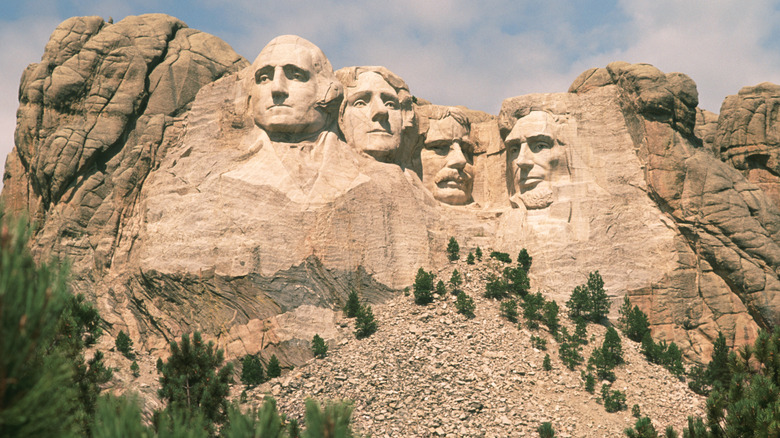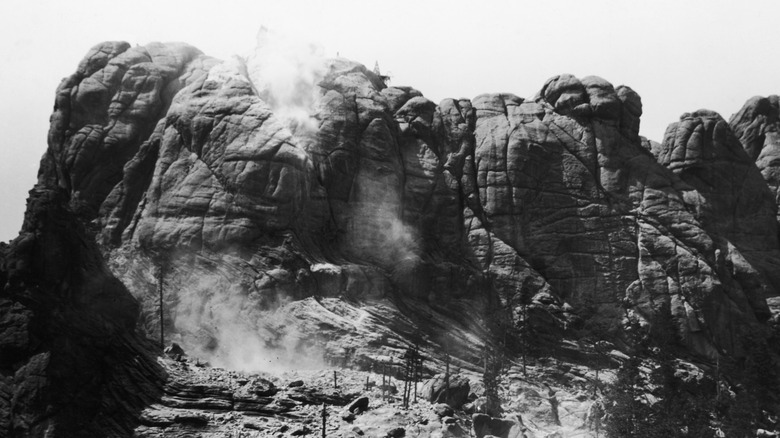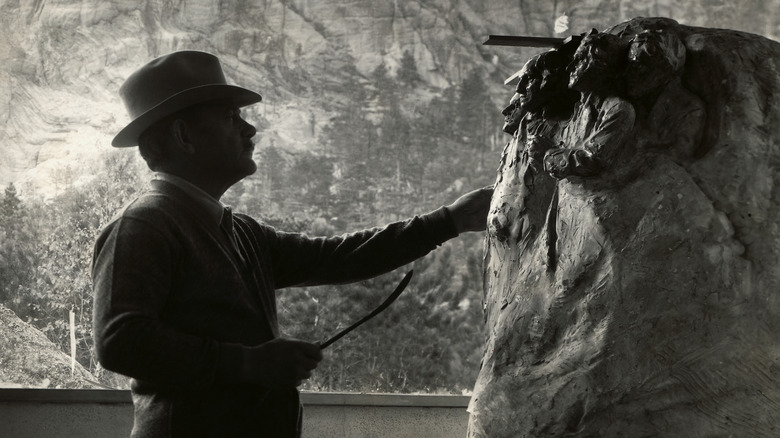Who Is Mount Rushmore Named After?
The names most associated with Mount Rushmore are the four presidents the monument depicts: George Washington, Thomas Jefferson, Theodore Roosevelt, and Abraham Lincoln. Where "Rushmore" came from is rarely considered by tourists. While obscure in the wider public knowledge, it is confirmed that Mount Rushmore was named for Charles E. Rushmore, a New York-based attorney. Rushmore himself confirmed his namesake in a letter to a South Dakotan historian in 1925, preserved by the National Park Service.
In Rushmore's account, he was sent to the Black Hills in 1884 to secure mining rights after tin was discovered in the region. He made several return trips and gradually became enamored with the landscape and friendly with some prospectors operating nearby. "Rough, but kindly men," he described them. "I conformed to their ways, and, may I say it with becoming modesty, was in favor with them." When he asked them one day for the name of a particularly impressive mountain, they told him it had none, but that they would then and there dub it Rushmore Peak. And so the name stuck, though it varied between the original, Rushmore Rock, and Rushmore Mountain.
Per Bradley Sum's "Black Elk Peak: A History," the name of the mountain remained unofficial until 1930, when the U.S. Board of Geographic Names formally recognized it as Mount Rushmore. Rushmore himself lived to see the recognition, but per The Photo News, he died the following year.
The mountain was originally named '6 Grandfathers'
The prospectors who jokingly dubbed a peak of the Black Hills Mount Rushmore were wrong when they told Charles E. Rushmore that it had no name before. Per National Geographic, the Lakota Sioux, Cheyenne, and Arapaho tribes used the Black Hills region for sustenance, and the Lakota considered the mountains the spiritual center of their world. The mountain that was later named Mount Rushmore was known to them as Tȟuŋkášila Šákpe, or Six Grandfathers, and was the site of prayers.
By the Treaty of Fort Laramie, the U.S. government promised the Lakota control over the Black Hills in 1868. However the government proved unwilling to abide by its own agreement when a flood of settlers and prospectors came to the Black Hills after gold was discovered in 1874 (per the National Archives). Instead of protecting the rights of the Lakota, the U.S. seized the mountains in 1877, only a few years before Rushmore came to do his legal work.
The Lakota fought back in court in the 1920s, even as planning for the national monument we know today got underway. The legal battle went on until 1980 when the Supreme Court ruled in favor of the tribe. But the Lakota have insisted on regaining sovereignty of the Black Hills, refusing a $17.1 million settlement, and Mount Rushmore has been the site and subject of protests for decades. How best to acknowledge the site's sordid history remains a contentious issue.
Charles Rushmore had nothing to do with the sculpture
Charles Rushmore was still alive when planning for the Mount Rushmore national monument began in the 1920s, but he had nothing to do with it. The monument was the brain child of Doane Robinson, a historian who wanted his state of South Dakota to get more tourists. Per History, his initial concept was to take the Needles of the Black Hills and transform them into legendary figures of the Old West, including Red Cloud of the Sioux.
That vision for the monument was rejected by the sculptor Robinson chose, Gutzon Borglum. Borglum was — and remains — a controversial figure; according to Smithsonian Magazine, he was the initial sculptor of the Stone Mountain monument to Confederate leaders, had uncertain connections to the Ku Klux Klan, and was an openly white supremacist. Yet he envisioned Mount Rushmore as a monument to American democracy, with four presidents chosen for their roles in that story. George Washington would represent the birth of America, Thomas Jefferson and Theodore Roosevelt its territorial and economic growth, and Abraham Lincoln its preservation (per National Geographic).
Borglum chose Mount Rushmore as the site of the monument in 1925. Charles Rushmore had no more to do with that choice or Borglum's hiring than he did Robinson's idea of building a monument, but he did come back into the story of his namesake before he died. According to the Rapid City Journal, Rushmore was one of the donors who kept the carving going.


